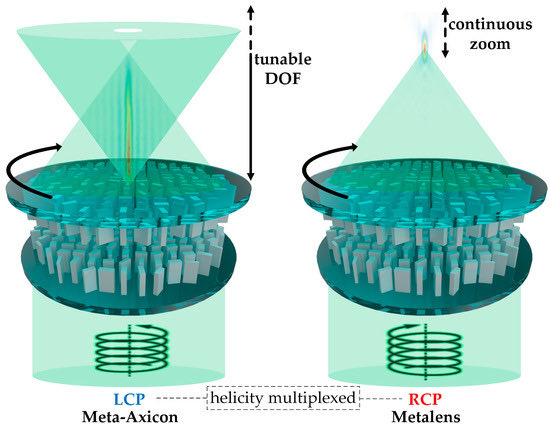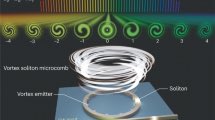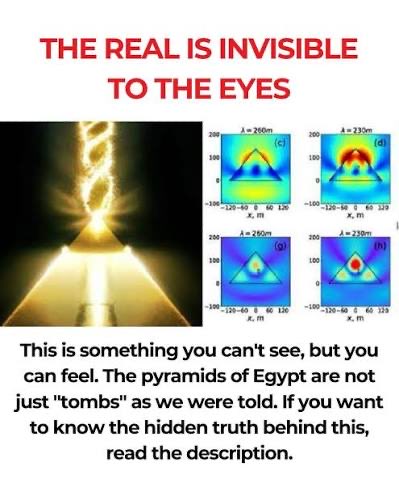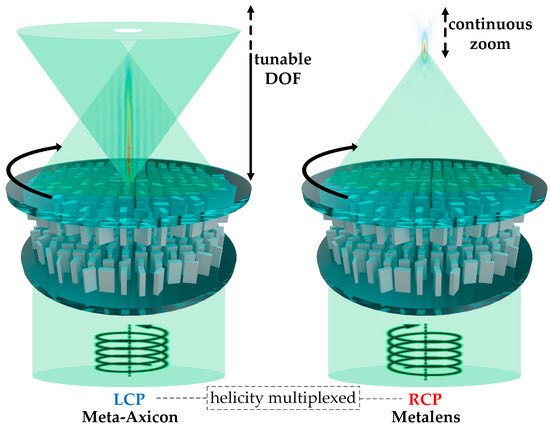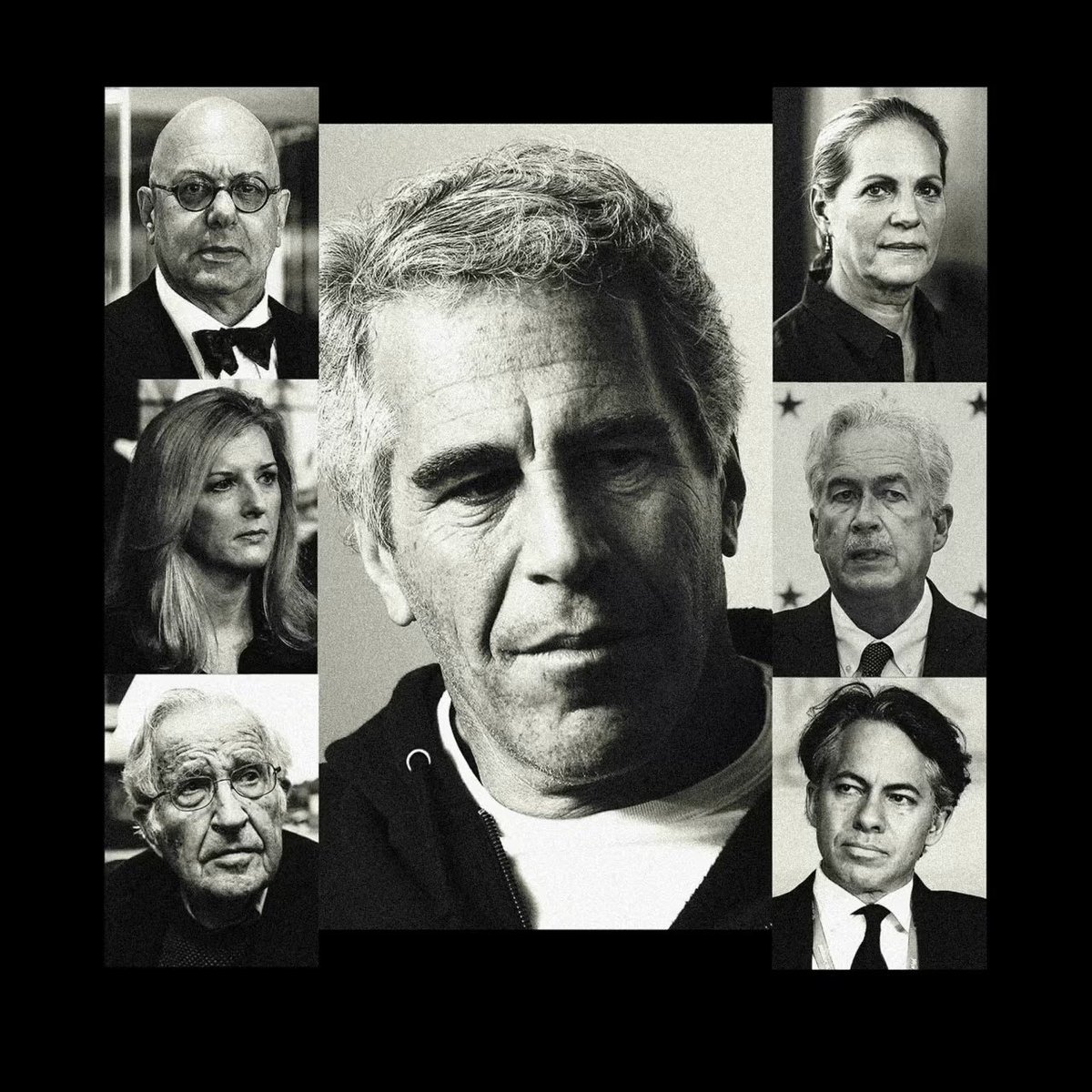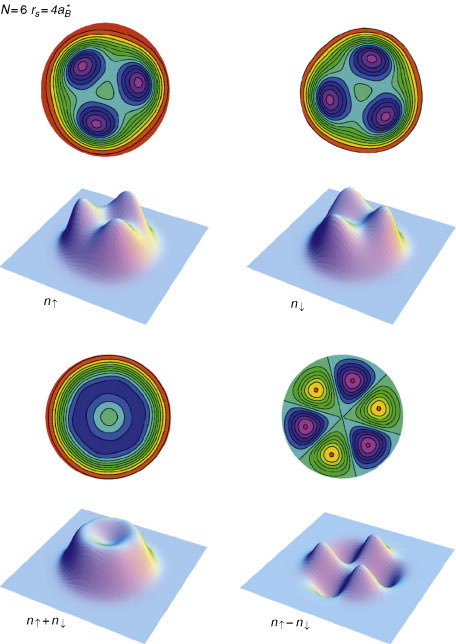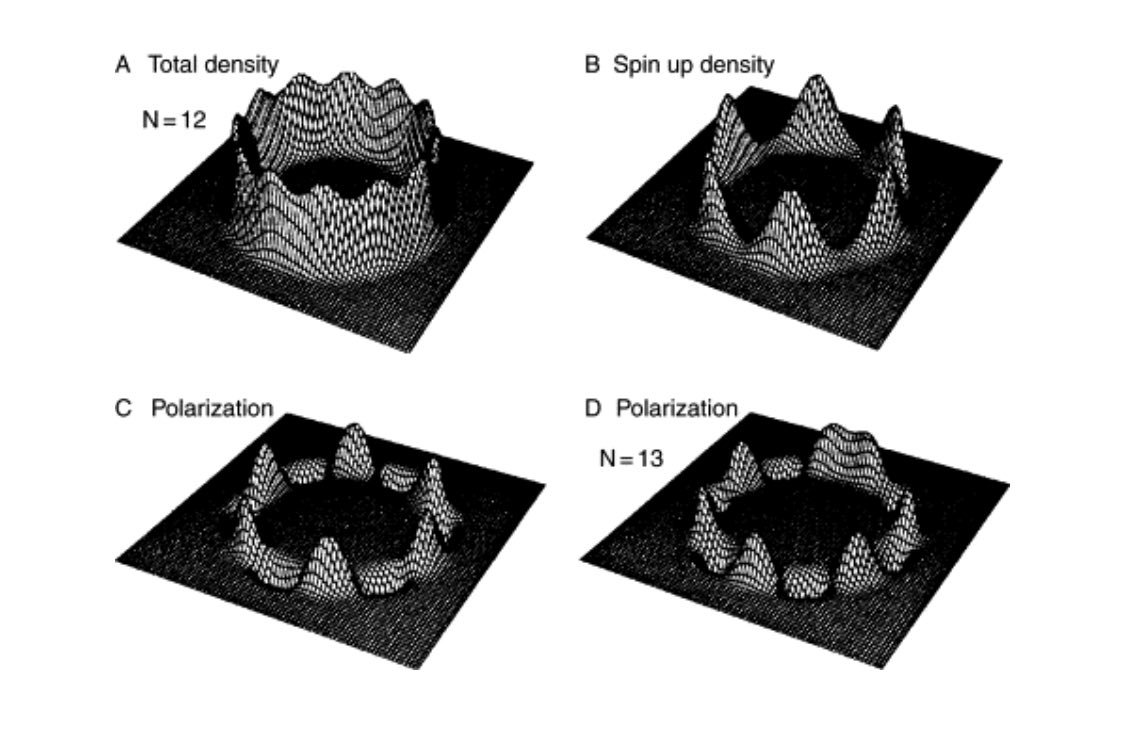An OAM (orbital angular momentum) beam splitter is an optical device that manipulates light beams based on their OAM properties, often used in optical communication and quantum information. Unlike a standard beam splitter that separates light based on polarization or intensity, an OAM beam splitter can split a beam into multiple beams, each carrying a different OAM state, or it can act as a "parity sorter," directing beams to different outputs based on their OAM "topology". A common implementation uses a Mach–Zehnder interferometer with two Dove prisms, which can be configured to sort OAM beams.
Sorting this out
•Standard beam splitter: A normal beam splitter simply divides an incoming beam into two output beams, typically with a fixed ratio (e.g., 50/50).
•OAM beam splitter: It works differently by using the OAM property of light, which is related to its "twist" or phase front, to guide the light.
•Sorting behavior: An OAM beam splitter can be designed to separate a beam into multiple beams with different OAM values. For instance, a beam with a specific OAM state might be directed to one output port, while a beam with a different OAM state is sent to another.
•Parity sorting: A specific type of OAM beam splitter can function as a parity sorter. It directs beams with an "even" OAM state to one port and those with an "odd" OAM state to another, where the specific integer values for "even" and "odd" depend on the device's configuration.
•Key components:Implementations can involve components like Dove prisms, waveplates, and right-angle prisms arranged in a specific configuration, such as a Mach–Zehnder interferometer.
•OAM beam splitter: It works differently by using the OAM property of light, which is related to its "twist" or phase front, to guide the light.
•Sorting behavior: An OAM beam splitter can be designed to separate a beam into multiple beams with different OAM values. For instance, a beam with a specific OAM state might be directed to one output port, while a beam with a different OAM state is sent to another.
•Parity sorting: A specific type of OAM beam splitter can function as a parity sorter. It directs beams with an "even" OAM state to one port and those with an "odd" OAM state to another, where the specific integer values for "even" and "odd" depend on the device's configuration.
•Key components:Implementations can involve components like Dove prisms, waveplates, and right-angle prisms arranged in a specific configuration, such as a Mach–Zehnder interferometer.
Information sharing between the UK and Israel is a complex issue
A beam splitter reroutes light by splitting an incoming beam into two separate beams, which can be adjusted in intensity, phase, and direction. The splitting ratio can be controlled by adjusting a phase shift in a Mach-Zehnder interferometer or by changing the polarization angle of the incident light. This technology is used in applications like optical networking, quantum computing, and audio effects pedals.
Optical rerouting: Beam splitters are optical components that divide a single light beam into two or more beams.
In fiber-optic networks, components like 3-dB couplers use beam splitting to send an optical signal equally to two different ports
Data mirroring is the process of creating an exact, real-time copy of data onto a second location to ensure its availability and for disaster recovery.
It involves continuously copying data, so if the primary source fails, the mirrored copy is immediately available. This can be done locally (like two hard drives) or remotely across servers or data centers.
OAM (orbital angular momentum) beam encryption is a method for securely transmitting information by encoding it onto the unique properties of light beams, like their phase and OAM state. This is achieved by using OAM beams, which carry information in their helical wavefront, and combining them with other encryption techniques, such as holography, phase modulation, and physical methods like multimode fibers or speckles. Encryption systems often use these OAM states as high-dimensional keys to scramble data, and decryption requires a specific key and pre-authentication to unscramble and reconstruct the original information.
•Encoding with OAM: Light beams can be generated with different values of Orbital Angular Momentum (OAM), which is a property of light related to its helical wavefront. Each OAM state can be used as a distinct channel for carrying information, similar to how different wavelengths of light are used in some fiber optics.
•Holography and spatial light modulators: Researchers use techniques like holography and spatial light modulators (SLMs) to create complex light patterns that encode information. By manipulating the OAM and phase of the light, they can generate unique encrypted holograms.
•Combining with other methods: Encryption strength is increased by combining OAM with other methods:
◦Physical modulation: Some methods physically scramble the OAM beam by passing it through a medium like a multimode fiber or a randomly shaking diffuser to create complex speckle patterns.
◦Deep learning: Neural networks, such as convolutional neural networks, are used to decode the scrambled information hidden in these speckle patterns, allowing for high-fidelity decryption.
◦Authentication: The system can require pre-authentication. For instance, a special authentication key is needed to authorize the decryption key for retrieval.
•Decryption: To decrypt the information, a recipient needs the correct key to perform operations that reverse the encryption process. This could involve using a neural network to interpret the speckle pattern or using the OAM information to reconstruct the original image or data.
•Holography and spatial light modulators: Researchers use techniques like holography and spatial light modulators (SLMs) to create complex light patterns that encode information. By manipulating the OAM and phase of the light, they can generate unique encrypted holograms.
•Combining with other methods: Encryption strength is increased by combining OAM with other methods:
◦Physical modulation: Some methods physically scramble the OAM beam by passing it through a medium like a multimode fiber or a randomly shaking diffuser to create complex speckle patterns.
◦Deep learning: Neural networks, such as convolutional neural networks, are used to decode the scrambled information hidden in these speckle patterns, allowing for high-fidelity decryption.
◦Authentication: The system can require pre-authentication. For instance, a special authentication key is needed to authorize the decryption key for retrieval.
•Decryption: To decrypt the information, a recipient needs the correct key to perform operations that reverse the encryption process. This could involve using a neural network to interpret the speckle pattern or using the OAM information to reconstruct the original image or data.
•High-dimensional encryption:OAM provides a high-dimensional space for encoding, allowing for larger amounts of data to be encrypted securely.
•Enhanced security: By combining multiple encryption techniques, these methods create secure systems that are resistant to eavesdropping and unauthorized access.
•High fidelity: Despite the complexity, systems are being developed that can achieve high-fidelity decryption, meaning the decrypted signal is very close to the original data
•Enhanced security: By combining multiple encryption techniques, these methods create secure systems that are resistant to eavesdropping and unauthorized access.
•High fidelity: Despite the complexity, systems are being developed that can achieve high-fidelity decryption, meaning the decrypted signal is very close to the original data
The term "crypto" comes from the Greek word kryptos, meaning "hidden" or "secret".
A "crypto-Jew" is a person who secretly practices Judaism while publicly professing another religion, such as Christianity or Islam. The term "crypto" comes from the Greek word for "hidden". This practice often arose historically due to forced conversions and persecution, where individuals and families would maintain Jewish traditions in private to avoid danger from authorities like the Inquisition.
•Meaning: The term literally means "hidden Jew".
•Meaning: The term literally means "hidden Jew".
A "hidden hand" is an unknown force or influence that secretly controls events, often with negative or complex outcomes. The term is used to describe hidden power, such as a secret society influencing politics or an individual pulling strings behind the scenes. It can also have more specific metaphorical meanings, such as God's subtle influence in early Christianity or the idea that being unaware of a task's true difficulty can lead to creativity, which is the "hiding hand" principle.
A beam splitter can be used with orbital angular momentum (OAM) beams to split a beam of light, but it requires specific methods to maintain the OAM properties. The "handedness" of a beam splitter typically refers to its interaction with the polarization state of light, and special techniques are used to manipulate OAM, which is a different type of angular momentum. Some methods for working with OAM beams include using holographic techniques, mode sorters, or specialized wave plates to demultiplex or separate OAM modes based on their helical wavefront,
While standard waveplates manipulate the polarization of light, a specialized class of waveplates, called Q-plates and S-plates, are used to generate and manipulate light beams that carry orbital angular momentum (OAM). These devices convert a beam's spin angular momentum (circular polarization) into OAM.

God is a Spirit: and they that worship him must worship him in spirit and in truth
spiral
1winding in a continuous and gradually widening (or tightening) curve, either round a central point on a flat plane or about an axis so as to form a cone."a spiral pattern"
◦winding in a continuous curve of constant diameter about a central axis, as though along a cylinder; helical.
•coiled
helical
helix-shaped
corkscrew
curling
winding
twisting
whorled
scrolled
cochlear
cochleate
voluted
helicoid
helicoidal
•(of a stairway) constantly turning in one direction as it rises, round a solid or open centre."a wrought-iron spiral staircase"
spiral; plural noun: spirals
1.
a spiral curve, shape, pattern, or object."a spiral of smoke"
coil
helix
curl
corkscrew
twist
gyre
whorl
scroll
curlicue
convolution
volute
volution
•ASTRONOMY
short for spiral galaxy.
spiral; 3rd person present: spirals; past tense: spiralled; past participle: spiralled; gerund or present participle: spiralling; past tense: spiraled; past participle: spiraled; gerund or present participle: spiraling
11.
move in a spiral course."a wisp of smoke spiralled up from the trees"
1coil
wind
twirl
swirl
twist
wreathe
snake
gyrate
◦cause to have a spiral shape or follow a spiral course."spiral the bandage round the limb"
show a continuous and dramatic increase."inflation continued to spiral"
soar
shoot up
rocket
increase rapidly
rise rapidly
leap up
escalate
climb
mount
skyrocket
go through the ceiling
go through the roof
mid 16th century (as an adjective): from medieval Latin spiralis, from Latin spira‘coil’ (see spire2).
mid 16th century (in the general sense ‘a spiral’): from French, or via Latin from Greek speira ‘a coil’.
Middle English: from Anglo-Norman French, from Latin spiritus ‘breath, spirit’, from spirare ‘breathe’.
spirit; plural noun: spirits
11.
the non-physical part of a person which is the seat of emotions and character; the soul."we seek a harmony between body and spirit"
Inspiration
1winding in a continuous and gradually widening (or tightening) curve, either round a central point on a flat plane or about an axis so as to form a cone."a spiral pattern"
◦winding in a continuous curve of constant diameter about a central axis, as though along a cylinder; helical.
•coiled
helical
helix-shaped
corkscrew
curling
winding
twisting
whorled
scrolled
cochlear
cochleate
voluted
helicoid
helicoidal
•(of a stairway) constantly turning in one direction as it rises, round a solid or open centre."a wrought-iron spiral staircase"
spiral; plural noun: spirals
1.
a spiral curve, shape, pattern, or object."a spiral of smoke"
coil
helix
curl
corkscrew
twist
gyre
whorl
scroll
curlicue
convolution
volute
volution
•ASTRONOMY
short for spiral galaxy.
spiral; 3rd person present: spirals; past tense: spiralled; past participle: spiralled; gerund or present participle: spiralling; past tense: spiraled; past participle: spiraled; gerund or present participle: spiraling
11.
move in a spiral course."a wisp of smoke spiralled up from the trees"
1coil
wind
twirl
swirl
twist
wreathe
snake
gyrate
◦cause to have a spiral shape or follow a spiral course."spiral the bandage round the limb"
show a continuous and dramatic increase."inflation continued to spiral"
soar
shoot up
rocket
increase rapidly
rise rapidly
leap up
escalate
climb
mount
skyrocket
go through the ceiling
go through the roof
mid 16th century (as an adjective): from medieval Latin spiralis, from Latin spira‘coil’ (see spire2).
mid 16th century (in the general sense ‘a spiral’): from French, or via Latin from Greek speira ‘a coil’.
Middle English: from Anglo-Norman French, from Latin spiritus ‘breath, spirit’, from spirare ‘breathe’.
spirit; plural noun: spirits
11.
the non-physical part of a person which is the seat of emotions and character; the soul."we seek a harmony between body and spirit"
Inspiration
Times up
TIMING
Keeping up?
Levitation
Ionosphere
Ions
What haven’t I forgot to mention?
late Middle English (denoting a vapour or exhalation): from Latin exspiratio(n- ), from the verb exspirare (see expire).
The word "expiring" comes from the Latin word expirare, meaning "to breathe out". This Latin root is a combination of ex- ("out") and spirare ("to breathe"). Its earliest uses in English, which date back to the 15th century, referred to dying or to something coming to an end, and the meaning has expanded to include the more literal "breathing out".
The word "expiring" comes from the Latin word expirare, meaning "to breathe out". This Latin root is a combination of ex- ("out") and spirare ("to breathe"). Its earliest uses in English, which date back to the 15th century, referred to dying or to something coming to an end, and the meaning has expanded to include the more literal "breathing out".
Description is any type of communication that aims to make vivid a place, object, person, group, or other physical entity. It is one of four rhetorical modes (also known as modes of discourse), along with exposition, argumentation, and narration
INDESCRIBABLE
Capable of being described
DESCRIBABLE
DESCRIBABLE
hammerable (comparative more hammerable, superlative most hammerable)
1
Capable of being formed or shaped by a hammer.
1
Capable of being formed or shaped by a hammer.
"Mer" is the ancient Egyptian word for pyramid
bellow; 3rd person present: bellows; past tense: bellowed; past participle: bellowed; gerund or present participle: bellowinG
(of a person or animal) emit a deep loud roar, typically in pain or anger.
"he bellowed in agony"
"he bellowed in agony"
roar
shout
bawl
thunder
trumpet
boom
bark
bay
yawp
yell
yelp
shriek
howl
scream
screech
call
cry
cry out
sing out
whoop
wail
caterwaul
raise one's voice
holler
vociferate
ululate
shout
bawl
thunder
trumpet
boom
bark
bay
yawp
yell
yelp
shriek
howl
scream
screech
call
cry
cry out
sing out
whoop
wail
caterwaul
raise one's voice
holler
vociferate
ululate
•sing (a song) loudly and tunelessly."a dozen large men were bellowing ‘Jerusalem’"
bellow; plural noun: bellows
1a deep roaring shout or sound."a bellow of rage"
1a deep roaring shout or sound."a bellow of rage"
bellow is sometimes confused with below
The word "lowered" comes from the verb "to lower," which originated in the late 1500s from the adjective "low". The adjective "low" is derived from Middle English and ultimately traces back to Old Norse and Proto-Germanic roots. The transitive verb "lower," meaning to cause something to descend, emerged later in the mid-1600s
Thoth, the Egyptian god of wisdom, writing, and the moon, was linked to the primeval watery abyss, known as Nu. Thoth helped create the world from this state of nothingness, and other myths mention him as part of the divine crew that resided in the abyss before the emergence of Egypt
In some interpretations of Jungian psychology, Thoth represents the subconscious or "low self," which is the keeper of all memories and can be seen as a "canyon" of the mind from which one must be lifted by unconditional love and acceptance
An "ascension pyramid" typically refers to a product used in New Age spiritual practices for meditation and energy work, often designed to mimic the proportions of the Great Pyramid of Giza. These pyramids are marketed with claims of amplifying spiritual energy, promoting healing, and aiding in "ascension" or spiritual growth. An "ascension pyramid" can also be a business term for a "value ladder" that maps out products and services as a customer progresses to greater results, as seen in marketing and sales.
A pyramid scheme is an illegal, fraudulent investment scam where participants are promised high returns for recruiting new members, with money flowing up the pyramid rather than from legitimate sales of products or services. These unsustainable schemes collapse when they can't find enough new recruits, leading to most later investors losing their money.
A crypto scheme, or cryptocurrency scam, is a fraudulent method used to deceive individuals into giving up their digital assets. Scammers often exploit the complexity and rapid growth of the crypto industry by employing tactics that promise high returns with low risk to exploit investors' greed or fear.
Digital currency is a term that refers to a specific type of electronic currency with specific properties. Digital currency is also a term used to include the meta-group of sub-types of digital currency, the specific meaning can only be determined within the specific legal or contextual case.
Types of digital currencies include cryptocurrency, virtual currency and central bank digital currency. Digital currency may be recorded on a distributed database on the internet, a centralized electronic computer database owned by a company or bank, within digital files or even on a stored-value card
Digital currencies exhibit properties similar to traditional currencies, but generally do not have a classical physical form of fiat currency historically that can be held in the hand, like currencies with printed banknotes or minted coins
Fiat money is a type of government-issued currency, authorized by government regulation to be legal tender. Typically, fiat currency is not backed by a precious metal, such as gold or silver, nor by any other tangible asset or commodity. Since the end of the Bretton Woods system in 1976 by the Jamaica Accords, all the major currencies in the world are fiat money.
Fiat money has value because it is backed by a government that declares it legal tender, while Monopoly money has no real-world value and is only for the game, as it was never intended to have value.
E-money is a digital form of money, representing a claim on fiat currency, that is stored electronically in a device or digital account and used for payments. It is issued by electronic money institutions (EMIs), not banks, after receiving funds from customers. E-money facilitates cashless transactions and is accepted by third parties as a payment method without needing a direct bank or credit card account, functioning like a prepaid payment system.
1This e-money is stored electronically on a device, such as a prepaid card or in a digital wallet on a mobile phone.
2Transactions: The stored e-money is then used to make payments for goods and services, much like physical cash
2Transactions: The stored e-money is then used to make payments for goods and services, much like physical cash
A quantum digital wallet is a concept for a digital wallet secured by quantum technology, such as using quantum dots to generate unforgeable cryptograms for secure digital payments. This is a future-oriented technology that aims to provide greater security against potential threats from powerful quantum computers, which could compromise current digital security methods. While current digital wallets use methods like encryption and tokenization, a quantum digital wallet would utilize quantum principles to secure transactions
•Quantum Cryptograms: A key concept is the use of "quantum cryptograms." These are not traditional digital codes, but rather unique, unforgeable "quantum signatures" that are inherently secure due to the principles of quantum mechanics.
•Secure, individual transactions: A quantum digital wallet could use quantum light to generate these cryptograms for each transaction, making them inherently resistant to digital theft.
•Quantum dots: The process may involve quantum dots, which are tiny semiconductor crystals that can emit specific colors of light. Researchers have demonstrated using quantum light (generated via mechanisms that could involve quantum dots) to secure payments over an optical fiber link.
•Secure, individual transactions: A quantum digital wallet could use quantum light to generate these cryptograms for each transaction, making them inherently resistant to digital theft.
•Quantum dots: The process may involve quantum dots, which are tiny semiconductor crystals that can emit specific colors of light. Researchers have demonstrated using quantum light (generated via mechanisms that could involve quantum dots) to secure payments over an optical fiber link.
An optogenetics optical fiber link is a system that delivers light from a source (like a laser) to a target area in the brain, often through an implanted optical fiber or bundle of fibers. This allows researchers to activate or silence specific neurons that have been genetically engineered to express light-sensitive proteins, controlling neural activity with high precision. For experiments with freely moving subjects, a fiber-optic rotary jointis often used to prevent the tether from twisting and breaking.
•Light Source: A laser diode (LD) or LED at a specific wavelength needed to activate the opsin in the neurons.
•Optical Fiber: A thin strand of glass that transmits the light from the source to the brain. The fiber tip can be polished in various ways (e.g., flat, conical, or tapered) to shape the light output.
•Implant: A fiber optic cannula is surgically implanted into the brain to deliver the light to a specific area.
•Connector: The fiber optic cable connects to the light source, often via a connector like an SMA905 or FC/PC connector.
•Optical Fiber: A thin strand of glass that transmits the light from the source to the brain. The fiber tip can be polished in various ways (e.g., flat, conical, or tapered) to shape the light output.
•Implant: A fiber optic cannula is surgically implanted into the brain to deliver the light to a specific area.
•Connector: The fiber optic cable connects to the light source, often via a connector like an SMA905 or FC/PC connector.
•Wired systems: The light source is external to the animal, connected by a fiber optic tether. This is common for many experiments, but can restrict movement.
•Rotary joint: Used in wired systems with freely moving animals to prevent the fiber from twisting, which could break it.
•Multipoint and multimodal fibers: Some systems use specialized fibers to deliver light to multiple locations simultaneously or to combine optical stimulation with electrical recording.
•Wireless systems: Miniature, wireless optogenetic devices are being developed to eliminate the tether and allow for more natural behavior.
•Rotary joint: Used in wired systems with freely moving animals to prevent the fiber from twisting, which could break it.
•Multipoint and multimodal fibers: Some systems use specialized fibers to deliver light to multiple locations simultaneously or to combine optical stimulation with electrical recording.
•Wireless systems: Miniature, wireless optogenetic devices are being developed to eliminate the tether and allow for more natural behavior.
Wireless optogenetics uses nanomaterials like quantum dots (QDs) to overcome the limitations of traditional light-delivery methods, such as invasiveness and the need for wired connections. This combination allows for the wireless, remotely controlled stimulation of genetically targeted neurons in freely moving animals by using light-emitting nanomaterials or by using nanomaterials to convert external wireless signals (like radio frequency) into light. Quantum dots offer a promising way to miniaturize devices for long-term, implantable systems that can be controlled wirelessly.
•Traditional methods use wired optical fibers or micro-LEDs, which are invasive, physically restrict the animal, and can cause damage during long-term use.
•Wireless optogenetics: The goal is to eliminate the wires and external tethering. This can be achieved in a few ways:
◦Using nanomaterials to generate light: Nanoparticles like quantum dots can be engineered to emit light when stimulated by an external energy source, such as radio frequency waves.
◦Nanomaterial-mediated stimulation: Quantum dots and other nanomaterials can be combined with light-sensitive proteins to allow for stimulation with different wavelengths or at different locations within the brain, often with improved efficiency and targeting.
•Wireless control: External signals are used to activate the nanomaterials and stimulate the neurons without physical wires connecting the animal to the light source.
•Wireless optogenetics: The goal is to eliminate the wires and external tethering. This can be achieved in a few ways:
◦Using nanomaterials to generate light: Nanoparticles like quantum dots can be engineered to emit light when stimulated by an external energy source, such as radio frequency waves.
◦Nanomaterial-mediated stimulation: Quantum dots and other nanomaterials can be combined with light-sensitive proteins to allow for stimulation with different wavelengths or at different locations within the brain, often with improved efficiency and targeting.
•Wireless control: External signals are used to activate the nanomaterials and stimulate the neurons without physical wires connecting the animal to the light source.
•Quantum dots are ideal for creating highly integrated and miniaturized implantable devices, which are less invasive and suitable for long-term use.
•Real-time monitoring: Systems can be designed to not only stimulate but also to monitor neural activity in real time, creating a closed-loop system.
•High spatiotemporal resolution: Quantum dots can offer high precision in both space and time, allowing for the targeting of specific neurons with millisecond precision
•Real-time monitoring: Systems can be designed to not only stimulate but also to monitor neural activity in real time, creating a closed-loop system.
•High spatiotemporal resolution: Quantum dots can offer high precision in both space and time, allowing for the targeting of specific neurons with millisecond precision
Quantum dot (QD) electron transfer is the movement of an electron into or out of a semiconductor nanocrystal, driven by processes like light absorption, electric fields, or coupling with other molecules. This transfer is fundamental to the function of devices like solar cells and light-emitting diodes, and its rate and efficiency depend on factors like the QD's energy levels, size, surrounding environment, and the driving force
•Photoinduced electron transfer (PET): Light absorption excites an electron in a QD to a higher energy state, which can then be transferred to an acceptor molecule or material, such as a metal oxide. This is a key process in solar cells and related technologies.
•Hot-electron transfer: In this process, an excited electron transfers its energy before it has cooled down to the lowest energy level of the conduction band. This is being explored for efficient hot-carrier solar cells.
•Inter-dot transfer: Electrons can move between two separate quantum dots, often in a heterojunction structure. This can occur through a direct transfer or via a resonant process, and can be used to create logic gates.
•Electron transport in devices:Within a functional device like a QLED, electrons can take various paths to reach their destination, including through the QD material, across interfaces, or via leakage pathways. The path they take is influenced by the applied voltage.
•Single-electron transfer:Advanced systems can be designed to move individual electrons one at a time between quantum dots, often controlled by electric gates or surface acoustic waves.
•Hot-electron transfer: In this process, an excited electron transfers its energy before it has cooled down to the lowest energy level of the conduction band. This is being explored for efficient hot-carrier solar cells.
•Inter-dot transfer: Electrons can move between two separate quantum dots, often in a heterojunction structure. This can occur through a direct transfer or via a resonant process, and can be used to create logic gates.
•Electron transport in devices:Within a functional device like a QLED, electrons can take various paths to reach their destination, including through the QD material, across interfaces, or via leakage pathways. The path they take is influenced by the applied voltage.
•Single-electron transfer:Advanced systems can be designed to move individual electrons one at a time between quantum dots, often controlled by electric gates or surface acoustic waves.
•Solar energy conversion: QDs can be used as donors in sensitized solar cells, where photoexcited electrons are transferred to a metal oxide acceptor, generating current.
•Quantum dot light-emitting diodes (QLEDs): The efficient transport of electrons and holes through the QDs is crucial for light emission in QLED displays.
•Quantum computing: The controlled transfer of electrons between QDs can be used to implement quantum logic gates.
•Quantum dot light-emitting diodes (QLEDs): The efficient transport of electrons and holes through the QDs is crucial for light emission in QLED displays.
•Quantum computing: The controlled transfer of electrons between QDs can be used to implement quantum logic gates.
Yes, optically-excited quantum dots can open ion channels in cells, and this is being researched as a non-genetic way to control cellular activity, such as nerve signaling. By using light to stimulate quantum dots that are in close proximity to the cell membrane, an electric dipole can be created that perturbs and opens nearby ion channels, leading to a change in the cell's electrical signaling. This is a technique that has potential for applications in neuroscience, particularly for restoring function in damaged cells like those in the retina.
"Retina digital ID" most commonly refers to biometric identification using high-resolution images of an individual's retina, which are unique and can be used for authentication. This is different from the UK's new "Digital ID" scheme, which is a government-led digital identity system for proving right to work and accessing services, and uses technology on a smartphone, not a retina scan. While both use the term "digital ID," one is a biometric technology, and the other is a government service.
?
?
• • •
Missing some Tweet in this thread? You can try to
force a refresh


